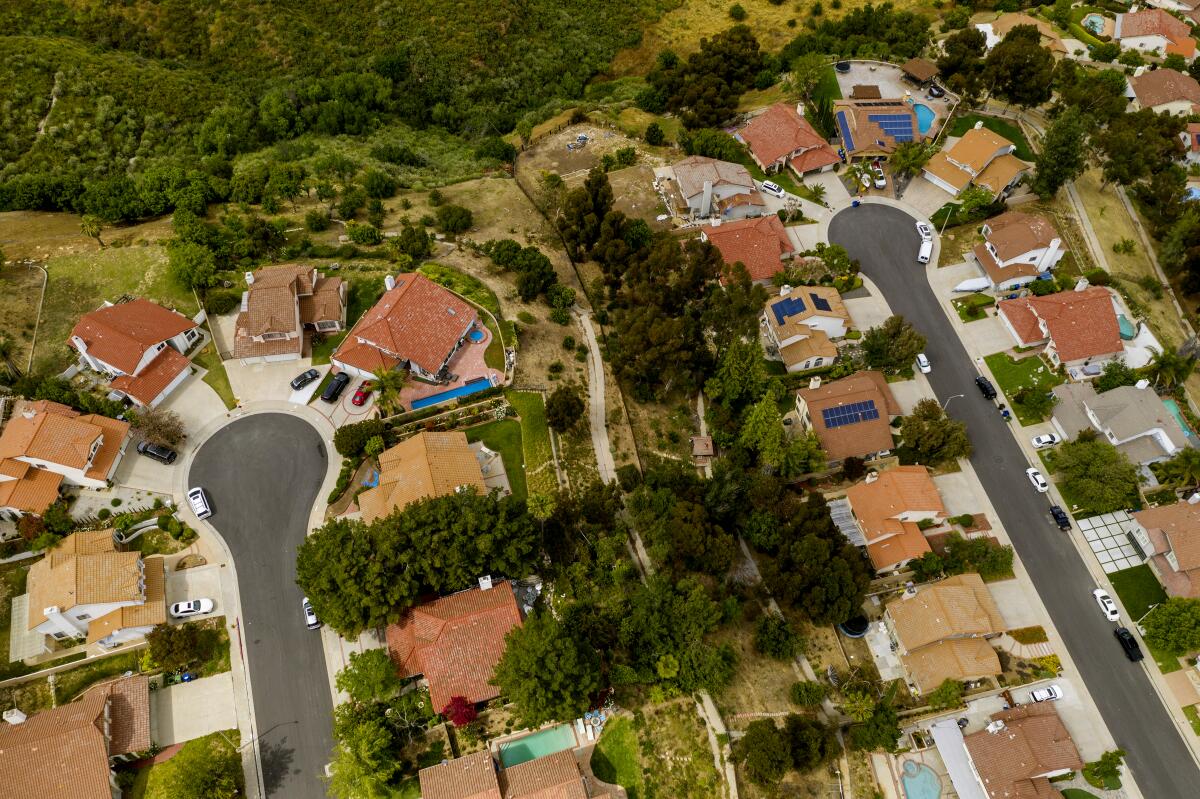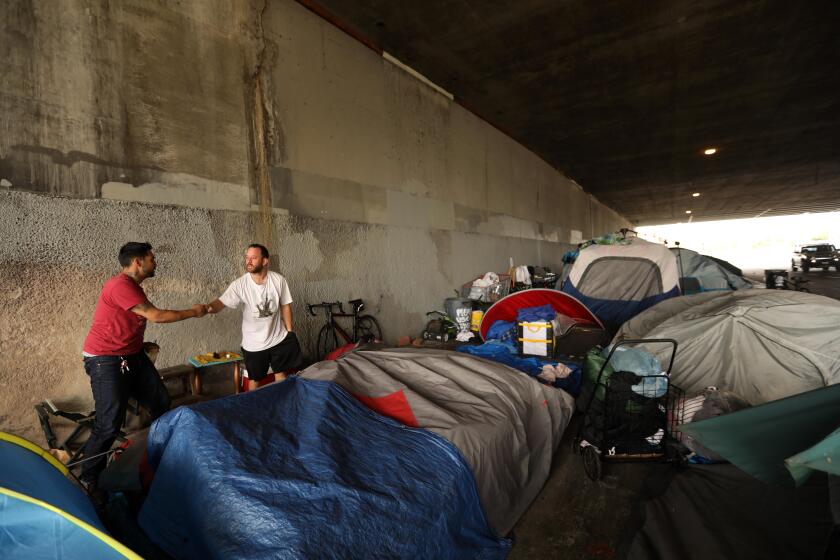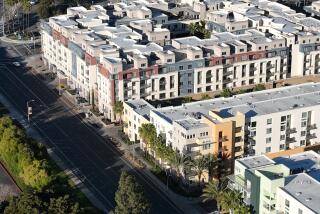Column: Suburban sprawl wins again in the battle against California’s housing crisis

SACRAMENTO — It’s fitting that major legislation to fight urban sprawl by forcing denser housing was killed by lawmakers from Los Angeles County, the nation’s sprawl capital.
Particularly fitting is that a leader of the L.A. death squad represents the San Fernando Valley, the epitome of sprawl.
He’s Sen. Bob Hertzberg (D-Van Nuys), a native Angeleno who helped whack a bill pushed by a lawmaker from San Francisco, arguably the state’s most densely populated city.
OK, perhaps Senate Bill 50 was a bit heavy-handed, utopian and unrealistic, asking too much of Californians who love their ranch-house culture. There were credible arguments against the bill: loss of local control to the state and the prospect of cramming apartment buildings into single-family neighborhoods.
Local lawmakers — such as Sen. Holly Mitchell (D-Los Angeles), who is running for county supervisor — also complained the bill didn’t do enough for affordable housing.
But the status quo is unsustainable. We should be building at least 250,000 housing units a year and we’re producing fewer than 100,000. When demand exceeds supply, prices soar. Urban housing is increasingly unaffordable for middle-class families, let alone the working poor.
With 40 million people already packed into California, we can’t keep shoving homes into the hinterlands, forcing two-hour, freeway-clogging, greenhouse gas-emitting drives to work.
Help us inform our reporting about the homelessness crisis in California by submitting your questions.
SB 50, by Sen. Scott Wiener (D-San Francisco), would have forced cities and counties to allow denser housing — such as mid-rise apartments — near major transit stops and job centers, overriding local zoning ordinances.
Fourplexes could have been built in most single-family neighborhoods. Any project over 10 units would have carried developer fees to help fund affordable housing or required up to 25% of the units to be reserved for low-income residents. Local governments would have had two years to devise their own development plans before the state hammer fell.
The legislation was complex and scary, especially for many local governments. The L.A. City Council opposed it.
The measure needed 21 Senate votes but failed by three: 18 to 15, with six abstentions.
Ten L.A. County senators — nine of them Democrats — voted “no” or abstained. Only one of the county’s Democrats — Lena Gonzalez of Long Beach — voted “yes.”
One refreshing thing: This fight had nothing to do with partisan politics. It was all about geography and the protection of single-family living from the encroachment of higher-density complexes. Roughly 75% of L.A. city is zoned for single-family homes.
During the Senate floor debate, Hertzberg said the bill’s premise was that mayors and city council members “are standing in the way of home building at the behest of single-family homeowners.”
“While there may be some merit to this notion in limited circumstances, this sweeping generalization both oversimplifies the problem and unnecessarily demeans people who have done nothing more than make homes for themselves, raise a family and play by the rules.”
Demeans? That’s a reach. How could any single-family homeowner feel demeaned by an effort to build more multifamily housing? Upset, perhaps, but not personally demeaned.
Neither Hertzberg nor any opponent of the bill openly defended sprawl. That’s a dirty word. They rallied behind local control, always a popular position.
But it was counties and cities that long ago allowed untenable sprawl, ripping out fruit orchards and planting housing tracts, creating long commutes. Instead of building upward, they built sideways.
Hertzberg blamed California’s tax system for local governments’ ignoring housing in land use decisions. He didn’t specifically criticize Proposition 13, the 1978 initiative that greatly reduced property taxes, but noted that the primary source of local revenue became the sales tax.
That’s why local governments “say yes to auto malls, say yes to big-bucks retail stores, but say no to housing,” the senator asserted. “That is the single biggest reason we are where we are.”
Sen. Steve Glazer (D-Orinda), a former suburban mayor, calls the jumble of urban jobs, unaffordable housing and long commutes “dysfunctional.” He voted against the bill.
Glazer says the state should provide financial incentives for businesses to create more jobs in the suburbs where people live so they don’t have to commute long distance.
“In my neck of the woods,” the senator also says, cities “are not bad apples. We’ve approved thousands of new housing [units], but it’s not being built.”
Dan Dunmoyer, president of the California Building Industry Assn., confirms that 550,000 housing units have been approved across the state, but so far they’re just vacant lots.
“The cost to build them is greater than the market,” he says. Dunmoyer blames local government fees — for sewers, schools, parks — and labor costs. “It’s not profitable to build right now.”
So it’s complicated.
There’s still time to produce a major housing bill this year. Legislators will be in session until Aug. 31.
“In the Legislature, seven months is an eternity,” Wiener says. “But we need to pass something that is actually a housing production bill — not just called that.”
It will be a test of Gov. Gavin Newsom’s leadership. In June, the governor can use state budget bucks to strong-arm votes for housing legislation — and later when he begins to sign or veto hundreds of bills.
Senate leader Toni Atkins (D-San Diego) chided opponents who offered no alternatives to SB 50.
“I want them to tell me what it is they’ll support,” she says. “Where are they willing to compromise?”
Yes, L.A. legislators. What exactly do you have in mind? Hopefully not more sprawl.
More to Read
Sign up for Essential California
The most important California stories and recommendations in your inbox every morning.
You may occasionally receive promotional content from the Los Angeles Times.












